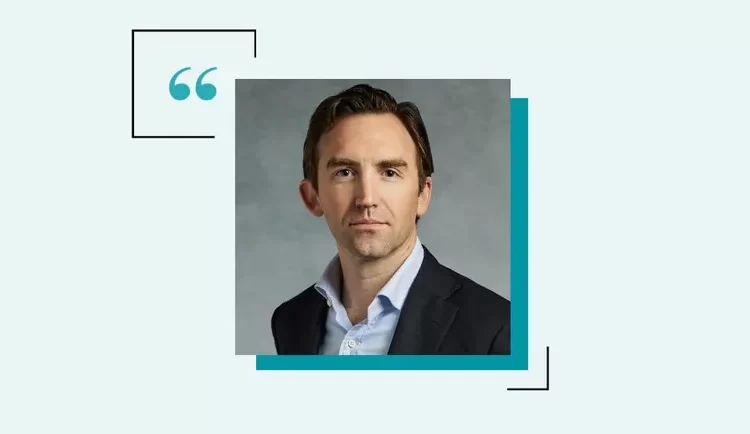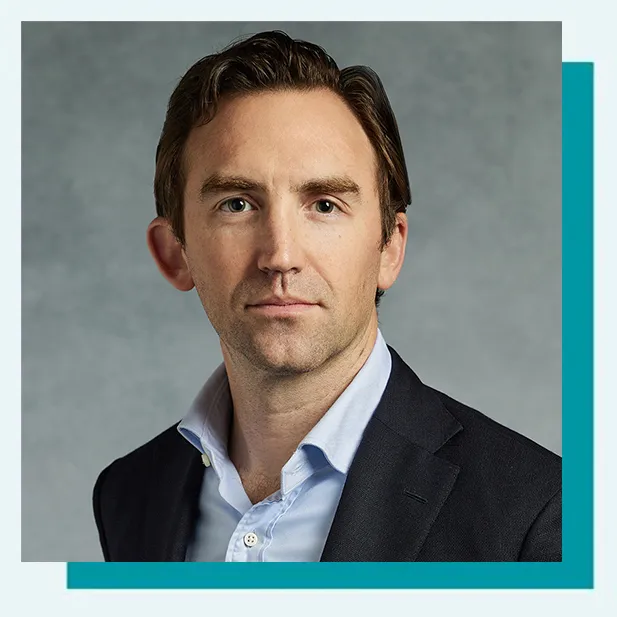
Erik Laney isn’t the job-hopping type. He came out of college into a job at J.P. Morgan, where he stayed for six and a half years, before joining a client, Santander Consumer USA. That was 10 years ago.
But he’s hardly stayed still. Along the way to being named in September 2022 as CFO at Santander Consumer USA — a privately held unit of Madrid-based banking and financial services giant Santander Group — Laney led financial planning and analysis, strategy and corporate development and the treasury function.
He recently was tapped for an additional role: head of finance (a title functionally equivalent to CFO) for another division, Santander Consumer & Business Banking (CBB), the deposit-gathering arm for Boston-based Santander Bank N.A.
Santander Consumer USA is Santander’s U.S. auto-financing arm. It’s got heft, with $65 billion in auto loans and leases on the balance sheet. It functions as a B2B2C company, working with car dealerships to provide price quotes for consumer loans, and then, after a sale, taking over all loan-servicing activities and related customer interactions.
CBB is currently somewhat smaller than the auto-loan business, with about $45 billion of consumer deposits.
Laney, who reports to both Consumer USA’s CEO and the finance chief of the holding company for all of Santander Group’s U.S. businesses, says his path to the CFO role was purposeful, if “not always linear — I’ve hopped around a bit.”
CFO.com recently spoke with Laney about his career, his new additional role and auto-industry trends.
Erik Laney

Permission granted by Erik Laney
CFO, Santander Consumer USA
First CFO position: 2022
Notable previous companies:
This interview has been edited for brevity and clarity.
DAVID MCCANN: Unlike many finance executives, you’ve only had a couple of employers. Is that by design?
ERIK LANEY: Honestly, when I left college I thought might be with J.P. Morgan for my entire career. I started there during the financial crisis in 2008, as an intern in the investment bank’s financial institutions group. It was right after they acquired Bear Stearns, and there were people from both Bear and J.P. on the floor. It was a super active time. But an opportunity [eventually] arose with Santander and I took it.
Was it your goal at Santander Consumer USA to become the CFO?
LANEY: Yes. At J.P. Morgan I was an investment banker, and bankers usually pitch high-level products and strategic initiatives. You don’t see the day-to-day operations, but you understand companies at a higher level. I got exposure to broader management teams and how to interact with the business in a financial services environment.
Also, Santander’s management team was incredibly acquisitive while I was at J.P. Morgan. Because the financial crisis in Europe lagged the U.S. crisis, there were tons of opportunities for Europeans to put cash into the U.S. and grow their business. That’s what Santander Group did with the auto-loan business. They put up billions to acquire the auto businesses of Citi, HSBC and others.
“At J.P. Morgan I was an investment banker, and bankers usually pitch high-level products and strategic initiatives. You don’t see the day-to-day operations, but you understand companies at a higher level.”

So Santander was a super-interesting place because of that — a company that recognized opportunities and had a knack for them in times of dislocation.
You just got the additional role of head of finance at the consumer and business banking division. How closely aligned are those businesses?
LANEY: They’re very different businesses. One goal is to look at common, higher-level practices and align those across the divisions. But our auto business is a mono-line lending business. CBB is complementary, because the loans are funded with deposits in some cases.
Do you have a strategy for how you’re going to handle the disparate responsibilities?
LANEY: I think it all comes down to having the right people in the right roles. At the auto business I’ve worked in every finance [discipline], so there’s a team of people in each one that I know and trust and have worked with for a long time.
On the CBB side I’m looking to grow that, to best understand how finance best interacts with the business, to make sure we’re not just showing them the news but are going to make strategic decisions.
When you got the CFO job, was there any culture shock related to the scope of responsibilities and pressures, even though you’d been with the company for several years?
LANEY: I’d say it’s been exactly what I thought it would be. I think every CFO wants to think of themselves as someone who can aid the business, helping make better business and economic decisions, and not just be an accountant.
I was already doing that in my corporate development role. Our finance department is a little different from a traditional one, in the sense that we do a lot of front-end business development. For instance, if we want to start a new relationship with a car manufacturer, it’s the finance group that pitches and coordinates that and negotiates the contracts, in conjunction with the business.
I also have had really good sponsorship throughout all of this. Juan Carlos Alvarez, the CFO of the U.S. holding company, helps me navigate the global institution, which is incredibly important for a CFO within a global institution. Who can I call when I have a problem? And how can I quickly escalate this to where it doesn’t just drag out and a decision isn’t made?
“Data is key to our business — not only being able to digest it accurately and make very good decisions based on it but also to digest it quickly.”

I also had the benefit of taking over as CFO when there was also a new CEO of the auto business, Bruce Jackson. He’d been at the company for a few years, and he also came from J.P. Morgan. He had a view on where he wanted to take the business, so I didn’t have to step into somebody else’s decisions. We got to make them together with a clean slate, in some ways.
Lending is a data-heavy endeavor. Can you characterize where you stand in terms of using data to leverage the business?
LANEY: Car dealers send us data that we use to make loan decisions. They send the data to other lenders as well. We take that data and go to credit bureaus and other third-party sources of information and try to determine the customer’s creditworthiness as well as the price needed to statistically make money on a group of loans.
So, data is key to our business — not only being able to digest it accurately and make very good decisions based on it but also to digest it quickly. A dealer expects that if they give you this information, they’re going to get a price quote back in less than 30 seconds. There’s not a lot of margins for error in that.
Auto sales traditionally rise and fall with the economy. How do you address that cyclicality?
LANEY: It’s been a very different market environment over the last four years since the COVID-19 pandemic, and production is still trying to catch up to consumer demand. So we’re seeing continued elevated car prices, while interest rates are also higher.
We do a lot of analysis as the year goes on, but there’s also a formal annual stress-testing process run by the Federal Reserve to determine whether our capital and reserve levels are right, and in the worst-case scenarios, what would we do from a funding perspective?
And then it’s just ongoing risk management — making sure the trends you expected to see are what you’re actually seeing. If not, there’s an active feedback loop between who’s monitoring the performance and who’s making the decisions on the front end.
Fortunately, or unfortunately, high interest rates have been the theme of my tenure as CFO. We work with the business to understand, as the cost of debt increases, what to do [with] price and how to pass that on to make sure our margins don’t get dramatically squeezed.
With all the varied pressures in a CFO job, what keeps you up at night? Or do you just sleep like a baby?
LANEY: That is kind of my personality, to be honest. There are personal aspects of the requirements, in terms of taking away time with your family and those sorts of things. That’s always difficult for people to navigate.
But in a job that requires a lot of you, just make sure that if you’re bringing your whole self to work, you bring your whole self to your home life as well.






